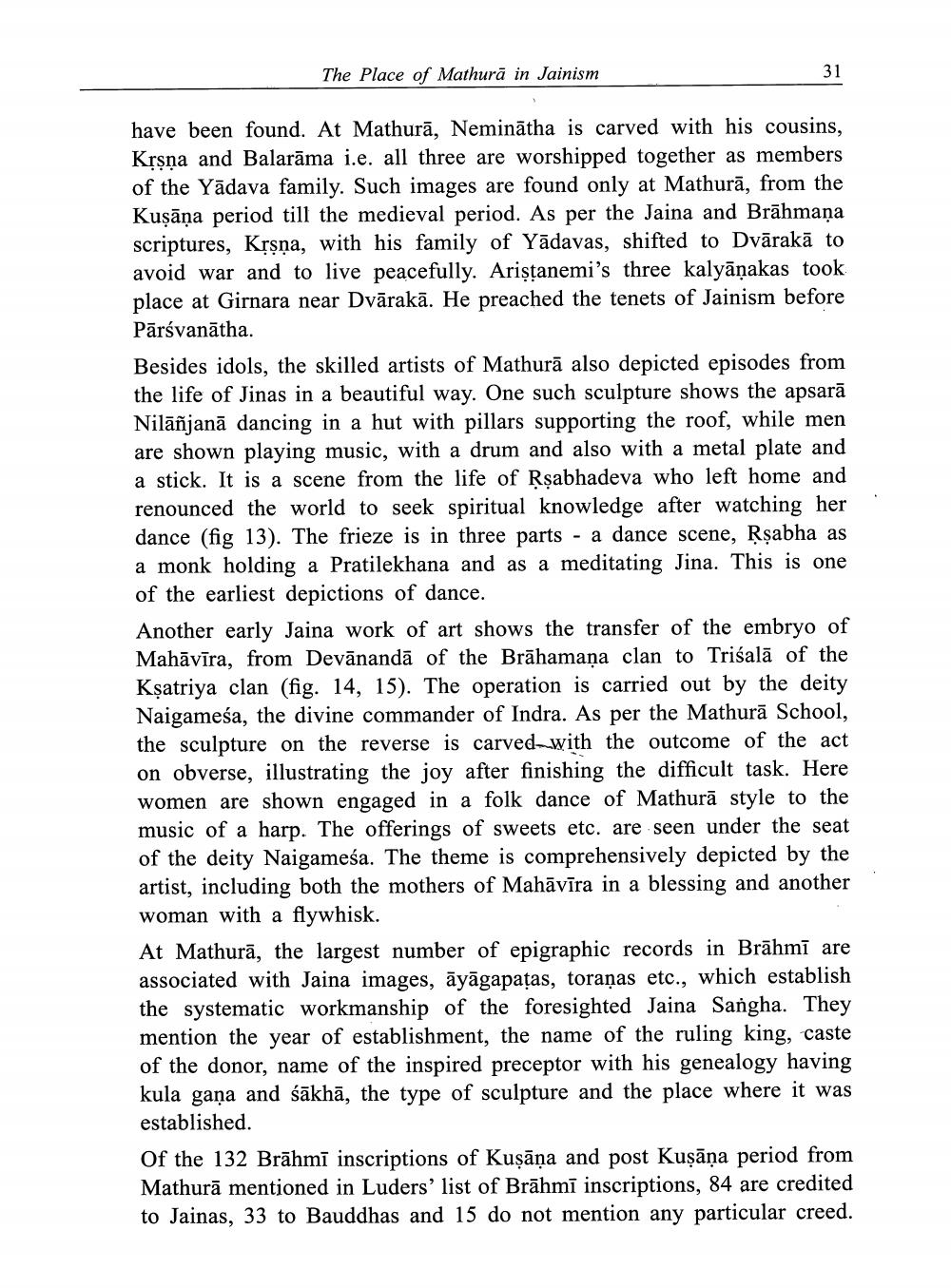________________
31
The Place of Mathura in Jainism
have been found. At Mathura, Neminatha is carved with his cousins, Kṛṣṇa and Balarama i.e. all three are worshipped together as members of the Yadava family. Such images are found only at Mathura, from the Kuṣāṇa period till the medieval period. As per the Jaina and Brāhmaṇa scriptures, Kṛṣṇa, with his family of Yadavas, shifted to Dvārakā to avoid war and to live peacefully. Ariṣṭanemi's three kalyāṇakas took place at Girnara near Dvārakā. He preached the tenets of Jainism before Pārsvanātha.
Besides idols, the skilled artists of Mathurā also depicted episodes from the life of Jinas in a beautiful way. One such sculpture shows the apsara Nilanjana dancing in a hut with pillars supporting the roof, while men are shown playing music, with a drum and also with a metal plate and a stick. It is a scene from the life of Rṣabhadeva who left home and renounced the world to seek spiritual knowledge after watching her dance (fig 13). The frieze is in three parts - a dance scene, Rṣabha as a monk holding a Pratilekhana and as a meditating Jina. This is one of the earliest depictions of dance.
Another early Jaina work of art shows the transfer of the embryo of Mahāvīra, from Devānanda of the Brahamaṇa clan to Trisala of the Kṣatriya clan (fig. 14, 15). The operation is carried out by the deity Naigameśa, the divine commander of Indra. As per the Mathura School, the sculpture on the reverse is carved with the outcome of the act on obverse, illustrating the joy after finishing the difficult task. Here women are shown engaged in a folk dance of Mathura style to the music of a harp. The offerings of sweets etc. are seen under the seat of the deity Naigameśa. The theme is comprehensively depicted by the artist, including both the mothers of Mahāvīra in a blessing and another woman with a flywhisk.
At Mathura, the largest number of epigraphic records in Brāhmī are associated with Jaina images, āyāgapaṭas, toranas etc., which establish the systematic workmanship of the foresighted Jaina Sangha. They mention the year of establishment, the name of the ruling king, caste of the donor, name of the inspired preceptor with his genealogy having kula gana and śākhā, the type of sculpture and the place where it was established.
Of the 132 Brahmī inscriptions of Kuṣāṇa and post Kuṣāņa period from Mathurā mentioned in Luders' list of Brahmī inscriptions, 84 are credited to Jainas, 33 to Bauddhas and 15 do not mention any particular creed.




